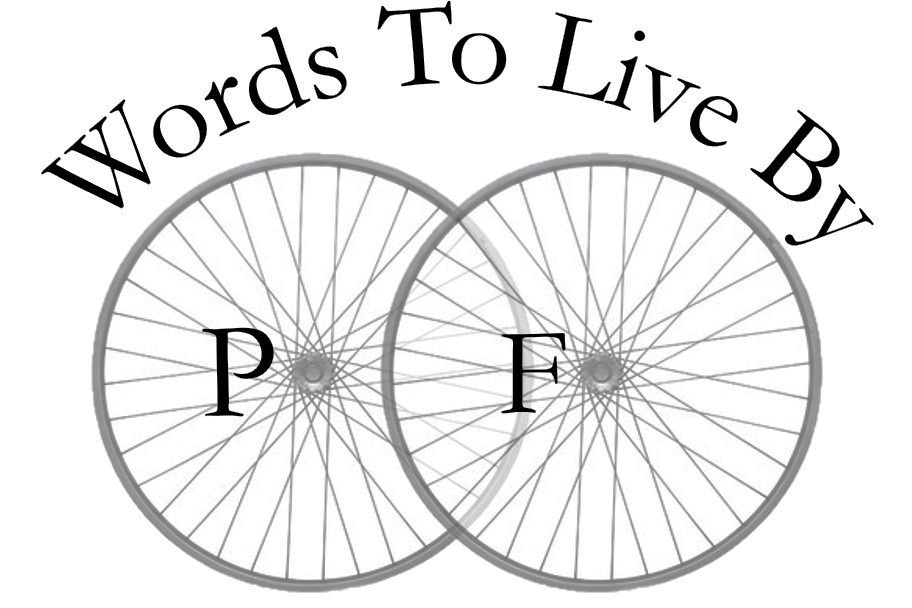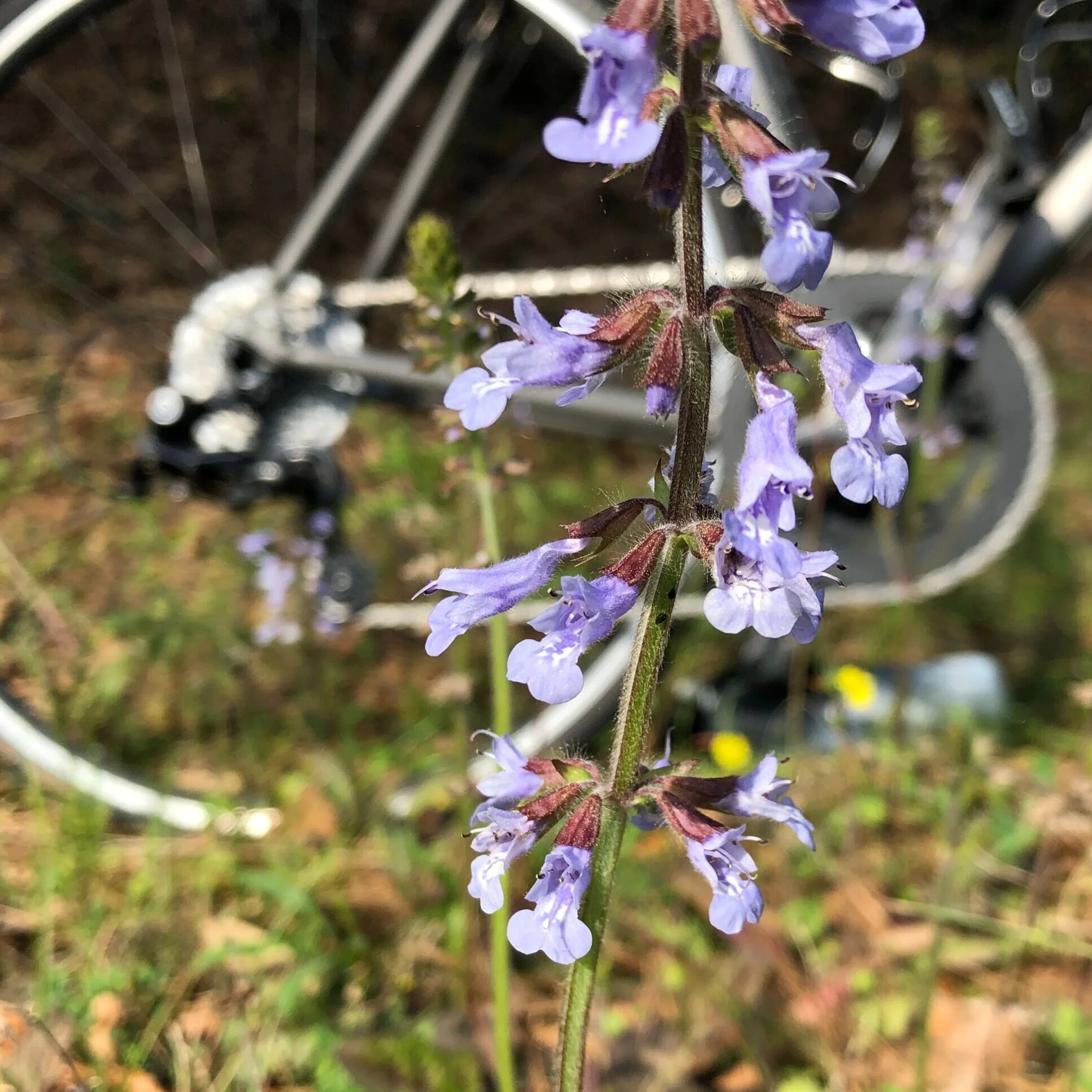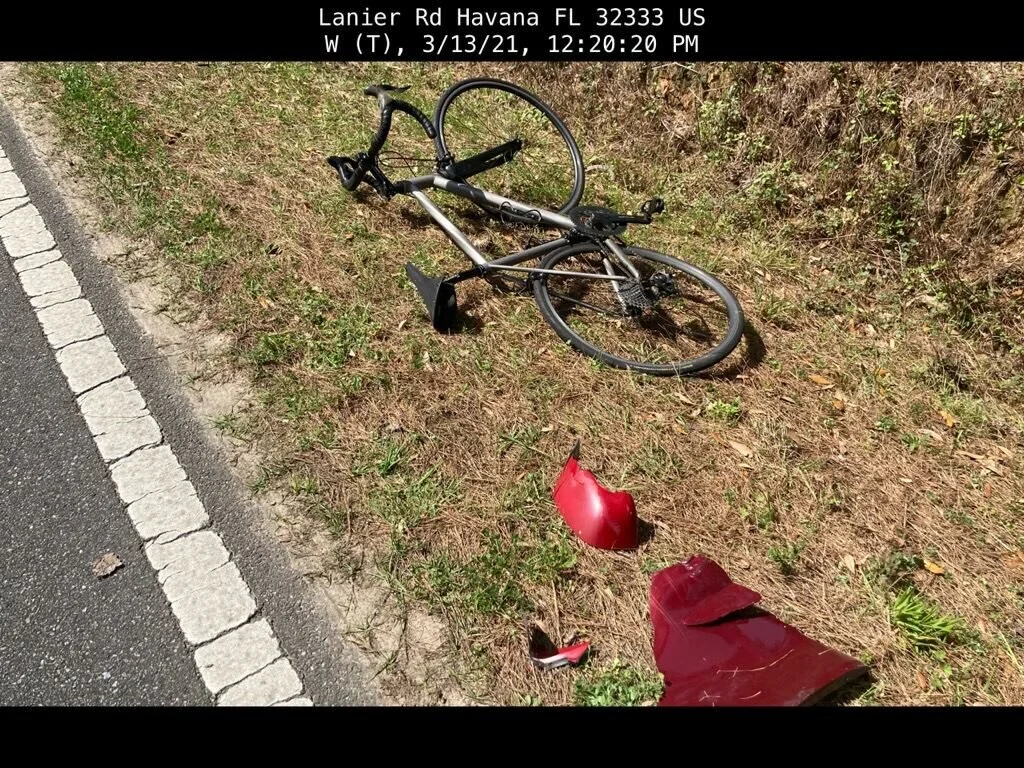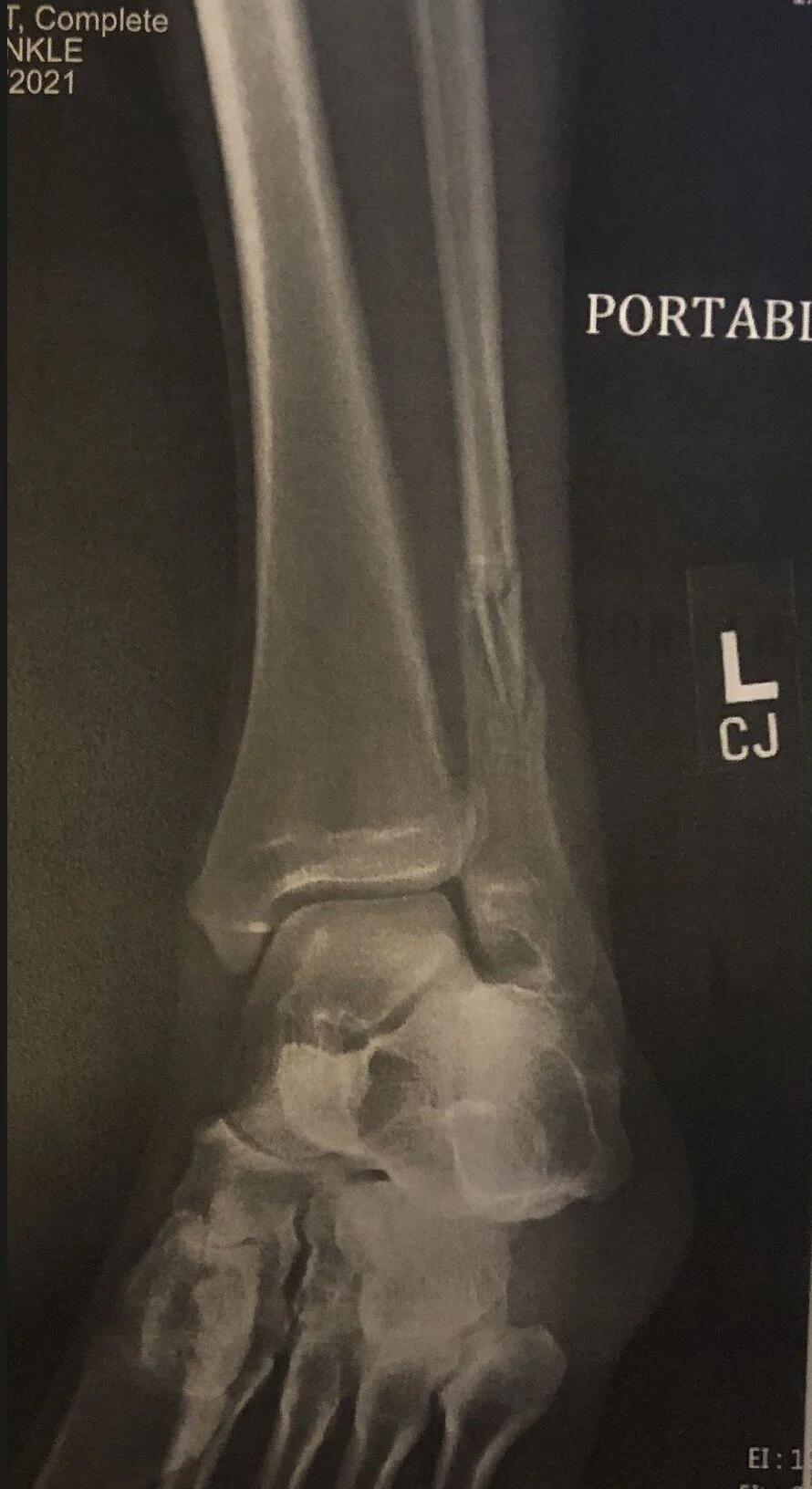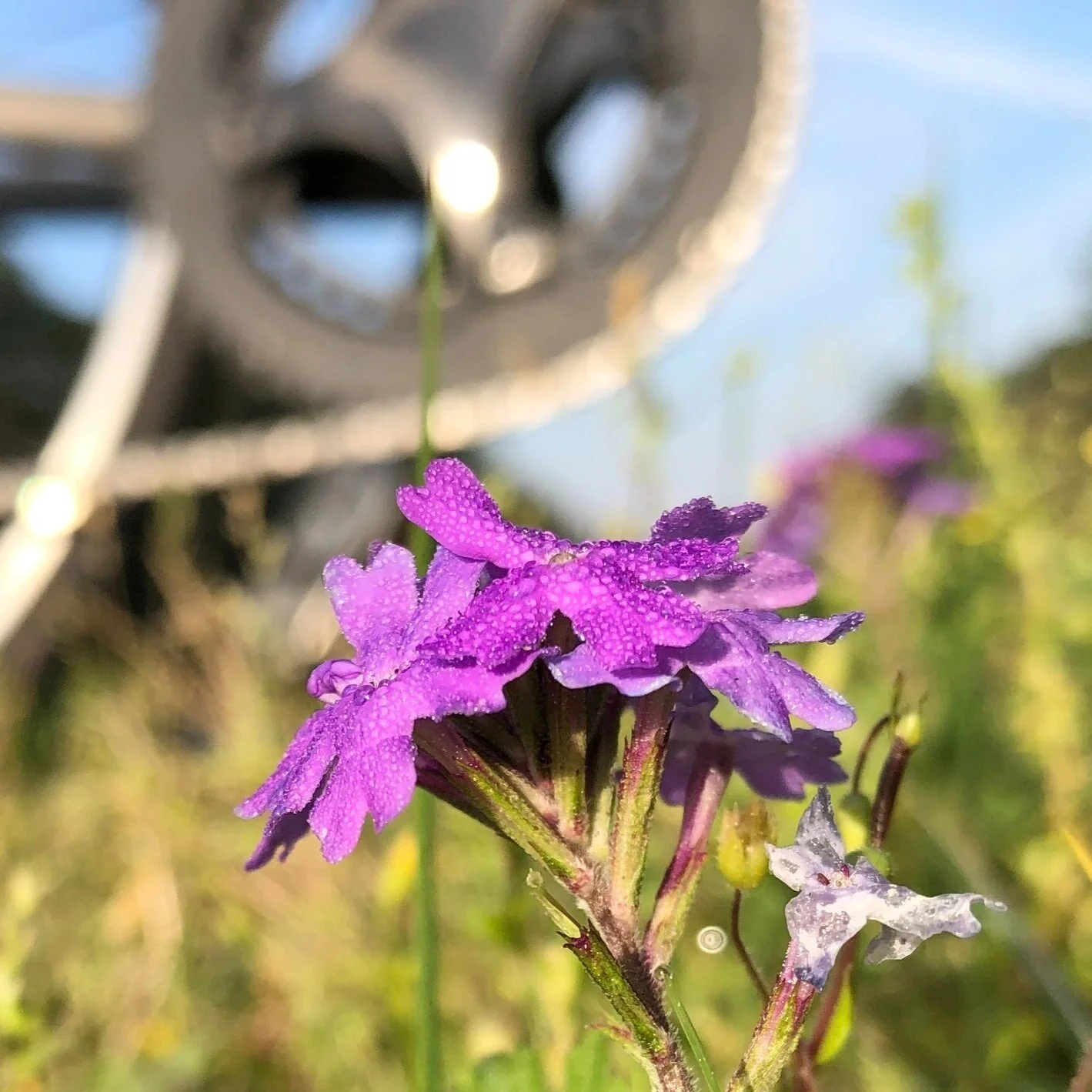Bloody, unbowed
This was not the plan. I was supposed to die.
I am glad I did not.
I long honed a heightened aversion to protracted, intractable pain, financial ruin, and a spiral down into a slow, pitiful, demise over years. Instead, I accepted the readily knowable risks of riding a bicycle on roads shared with speeding steel death machines driven by heedless, vacant, often malicious people. The combination of these truths led me to understand the numbers and hope the inevitable clash of flesh and metal would bring a swift end rather than an agonizing, deteriorating, drooling and dependent spiral to the bottom.
I promise I had no death wish. I merely was running the risk-reward calculations of riding more than 20,000 miles over the course of two toxic national political campaigns and through a single, exhausting presidential term, impotently watching as the American experiment imploded. If a vehicle was going to get me I concluded death was the best worst outcome. I pedaled my bicycle for the joy of it. As a bonus I got in shape. If I was bound to get hit – and everything about modern America conspired to insure I would be hit by a car – the top outcome would be instant death. I rode to not think. I rode to breathe deep. I rode to occupy myself between waking and sleeping, to get through interminable weekends. I rode for blue skies and bright sunshine. I rode to punish myself through sweat and fatigue. Because I spent so much time sharing the road, as the insipid and facile phrase goes, and because I am not an idiot, I had a solid idea how my headstrong, righteous pursuit of my own rights to the road would end. Death was ever present, even if I categorically denied it to others. I took artsy photos of wildflowers to mask my fatalism.
I survived instead. Good thing, too. I made it back to where things make sense. I don’t really care who the president is these days. There is some small sliver of hope this country might come to terms with its ongoing original sin. It turns out I didn’t have to die. I just needed a better outlook, a bit of hope about humanity, and a chance to heal.
It is a paradox that I came so close to dying at the time I was most definitively returning to life. It would have been a shame to die. And yet, there I was, struck and broken, splayed on the sward, my Lycra torn, my skin abraded, and my head bleeding. Bones were broken, vertebra were severed from transverse processes – snapped off, is how it was described. My brain was swollen and did a massive reboot, its reaction to a sharp shake inside the old skull.
My last reliable memory is turning onto tree-lined Lanier Road, a shaded country lane in the middle of Gadsden County, halfway between Havana and Quincy. There are gaps in my mind never to return, so I rely instead on the crash report, the suspect’s arrest report, and other documents from the Florida Highway Patrol, as well as my cue-sheet route map, and the tracking recorded by my exercise app.
When the 2005 Pontiac Grand Prix hit me from behind, it knocked off the vehicle’s passenger-side mirror and a piece of trim. More personal, enduring evidence is found in my fractured back, the contusions on my concussed head, and the broken fibula. These serve as reminders of what I otherwise cannot recall, the painful evidence of the violence done to me.
I have the unbidden benefit of experience with concussions and memory loss. This marks my fourth concussion, so I am familiar with the Rose Mary Woods-like erasure of minutes from the playback of my life and the disconcerting thought and speech loops as I emerged back into a world where my synapses both fired and received messages.
“I’ve had these before,” I informed EMT Scott in the ambulance as I came around. “So I know I’m probably repeating myself. Have I told you already?”
I had told him already.
Scott told me about the pieces of the hit-and-run driver’s car on the roadside.
As one particularly impassioned friend described it, accurately, “The savage hit you, left you for dead in the ditch, and sped off to wreak more mayhem somewhere else in the county.”
There is a photo taken by Trooper Franklin with my titanium bicycle forlornly, brokenly, on its side and the pieces of the vehicle arrayed nearby as if in some grisly art installation, a tableau called “Car vs. Bike.” As the state attorney later said to me, the bike is never the winner in these contests. He dredged up memories of high school physics, then, with a warning about force being equal to mass times acceleration. The motorized vehicle always wins the mass and acceleration columns of that matchup, and thus carries the day with its force.
Trooper Franklin’s crash report narrative and drawing are two-dimensional, black-and-white, bloodless depictions of a violent, catastrophic event. The description of what took place is determinedly passive for such an actively vicious sequence. You can right this wrong by altering the text to read the following excerpt from the crash and replacing “Vehicle 1” with “two-ton mass of powered, deadly steel,” and then change out “Non-motorist 1” with “Less than 200 pounds, inclusive of the 17-pound bicycle, of soft tissue and bodily fluids contained in a fragile vessel you recognize as me.”
“(Vehicle Operator 1) ran off the right side of the roadway, causing the front right of (Vehicle 1) to collide with the left rear of (Non-motorist 1’s) bicycle.
“(Non-motorist 1) was pushed forward from the impact with (Vehicle 1), causing (Non-motorist 1) to come to final rest on the west grass shoulder of L(a)nier Road.
“(Vehicle Operator 1) fled the scene of the crash, southbound on L(a)nier Road, without exchanging crash information with (Non-motorist 1) or checking on his well-being.”
I can punch that up a bit and bring a little flesh-and-blood consequences into the description, all of it drawing on information contained in the crash report and the separate arrest report for Vehicle Operator 1.
The Grand Prix driver had to run off the road to hit me in the grass and didn’t so much as slow down while leaving the scene in the vehicle that would, hours later, have two open vodka bottles riding shotgun in the front seat when he rolled it. He didn’t check to see how I’d fared in the crash, but blithely drove on. The driver faces charges in circuit court, including failure to stop and remain at a crash involving serious bodily injury, DUI causing damage to a person or property, driving with a suspended or revoked license, and two counts of obstructing an officer without violence. He’s also got a couple traffic violations in front of him, stuff like open-container and failure to maintain a lane, and careless driving.
That’s the brief on page 2B, as we used to say in the newsroom, back when a 2B brief was a nonfatal traffic crash -- fatals got you out to a 1B brief and I’m happy, thank you very much, to stay inside the local section.
If I were inclined to write letters to the editor, and I am not, I would take as my topic none of the issues raised here – or at least only addressed tangentially. My bicycle – and I wager to say its resale value exceeds the Kelly Blue Book number for the Pontiac used to nearly kill me – was taken from the scene of the crash by a contract tow company. My broken bicycle was impounded in Gadsden County and it took 80 bucks to spring it. The tow-truck operator told my buddy who fetched my bicycle from the impoundment lot about the sideview mirror left at the scene of my crash. I am reminded of Chekhov’s dramatic law about the appearance of a loaded gun on the kitchen table in Act One. FHP documents tell of the part-matching process to identify the year, make, model, and color of the vehicle that ultimately appears again in Act Three of this drama, upside down and missing a side-view mirror. Trooper Edwards signed a property inventory for the Pontiac, also impounded at the same lot where my bicycle ended up, noting the two open vodka bottles in the front of the car.
I know all the ways it’s necessary to have a contract tow company pick up vehicles from crash scenes and I am not so naïve as to think these charges are anything other than part of the deal to get this service performed. But it seems possible to have a more generous, common-sensical approach to keep those who have been nearly killed – whether on a bicycle or behind the wheel – from having to pay to get their rides back. I focus on this small injustice precisely because I can be reasonable about it. Other injustices of this crash are too big to contemplate, much less maintain a reasoned equilibrium.
I can discuss this dispassionately as a matter of public policy; that’s the realm of towing fees and impoundment charges. Not so with the crash and my injuries. That’s a crime, a violation I have plenty of thoughts, feelings, and responses to. In short, it makes me mad as a citizen, enraged as a cyclist, and scared as an injured person.
No matter my mindset while riding, no matter my expectations of the outcome for exercising my rights, literally and figuratively, I must be clear about how I ride my bicycle. At all times, I follow Florida law and operate under the rules of the road, staying as far to the right as practical, steering predictably and consistently in a straight line, and otherwise obeying applicable regulations. I wear a helmet without fail. I deploy flashing white and red lights fore and aft in an effort to make sure inattentive drivers see me. I was overjoyed when Trooper Franklin recited to me Florida Statute 316.2065, concerning bicycle regulations: “Every person propelling a vehicle by human power has all of the rights and all of the duties applicable to the driver of any other vehicle under this chapter… .”
It is usually I who must insist on recognition of this law: I have a right to the road, same as any Ford F-350, Rolls Royce Phantom VII, or Pontiac Grand Prix. Here, then, is yet another instance where being right does not matter as much as our Sunday school teachers or high school debate coaches may have led us to believe. Might does not make right, but might nonetheless remains might. Argue law all you like. Physics still wins, as the state attorney, a cyclist himself, reminded me.
I have preternatural tendencies to positivity and forward thinking. There is little point in dwelling on what might have been. Neither is anger conducive to moving forward or mending broken bones. I am trying to spend as much time as possible focused on recovery and healing, doing the right things to rush a return to health. It’s working. My true, overriding response to this travesty – that mofo mowed me down like a cur and left me for dead – is how it’s a great excuse to build up a new gravel bike, trick it out with Italian components and fat-ish tires. Then I can explore new worlds on red clay and gravel roads spiderwebbing through public and private lands of South Georgia and North Florida.
New vistas await, new challenges are ahead, featuring more live oak canopies and fewer speeding vehicles. I look forward to recalibrating expectations and goals. The details will change, but not the point. I will chase sunshine and beauty, fend off the ravages of desuetude, push myself to recognize and celebrate the wonder all around us.
The very same approach I brought to each and every bicycle ride applies now to my recovery. However far out you go, that’s how far you have to come back. I find myself disconcertingly far from where I started on March 13, but I am determined to make my way back, not only arriving but thriving on a new, wonderful route of discovery and appreciation.
Let’s go.
